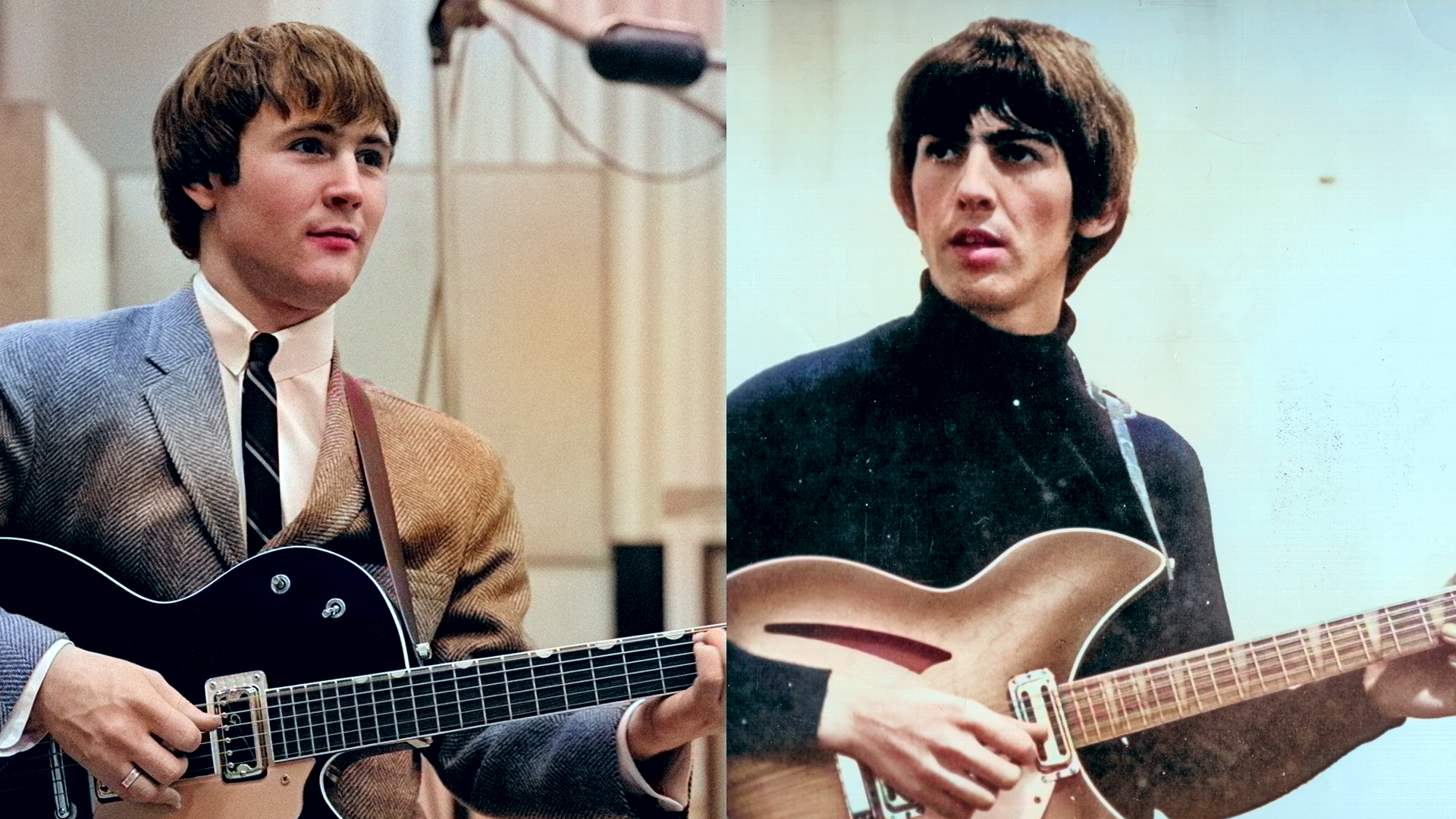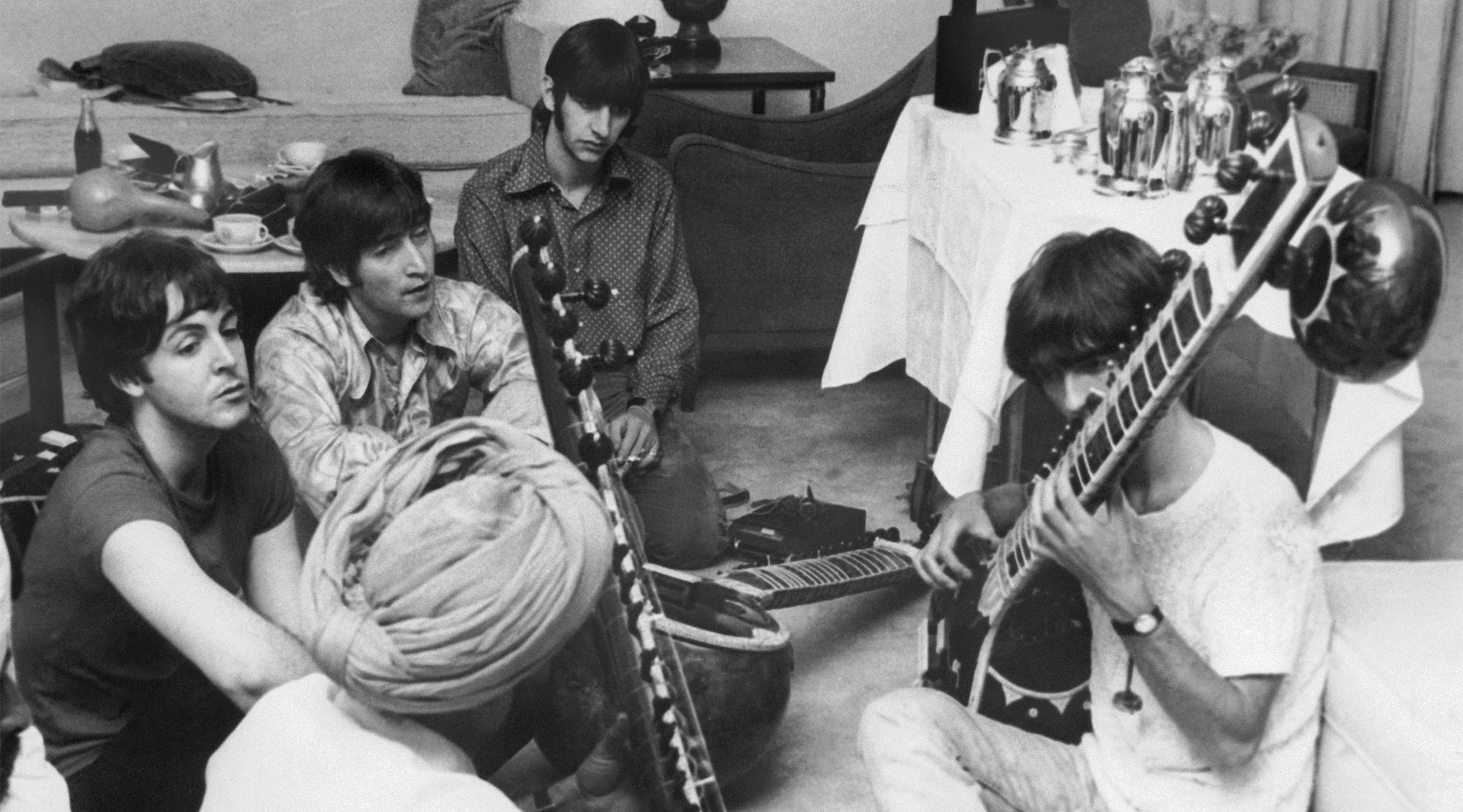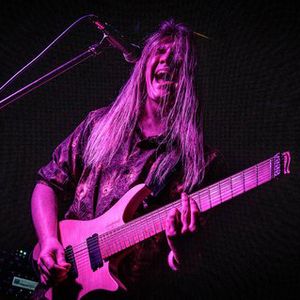“I had just been turned on to Ravi Shankar, and I had an album in my suitcase. I gave it to George.” How David Crosby's casual recommendation changed George Harrison’s guitar playing forever
Harrison’s love for Ravi Shankar and his sitar experiments are well documented, and it seems Crosby got the ball rolling

When George Harrison’s "While My Guitar Gently Weeps" Les Paul was kidnapped in 1973, he called on his former sitar mentor Ravi Shankar to issue an appeal for its safe return, such was their deep-rooted connection.
The Indian musician music introduced Harrison to the Eastern tonalities he brought into the Beatles' music from 1966 onward. But Harrison didn't discover Shankar's music by chance. The late David Crosby played a key role in imbuing the Beatle with such inspiration, and one could argue that Sgt. Pepper’s Lonely Hearts Club Band, the first album to bear such flavors, wouldn’t have been the same without his input.
The dream-like, sitar-heavy journey of “Within You Without You” saw Harrison dive headfirst into this newly discovered musical realm, and it was something he’d later explore on “The Inner Light” and — in terms of its lyrical theme — his solo offering “My Sweet Lord.” Shortly after, Harrison and Shankar famously joining forces for 1971’s legendary Concert for Bangladesh as their relationship continued to grow.

But history would have likely told a very different story had Crosby not first introduced Harrison to Shankar’s work in 1965, when his group the Byrds were on a visit to England. Speaking to Music Connection in 2022, Crosby revealed how he and Harrison became sounding boards for one another’s musical discoveries — much as Jimi Hendrix and Billy Gibbons once proved to be for one another.
“I was very taken with George. I liked him a lot,” Crosby told Music Connections. “Always did, right from the start. Very sincere, very friendly, and trying hard to be a decent human being. And that appeals to me to no end.
“I had just been turned on to Ravi Shankar by a friend in the States, and I had an album by Ravi in my suitcase,” he continues. “I gave it to George.”
He knew it would be a hit with Harrison.
All the latest guitar news, interviews, lessons, reviews, deals and more, direct to your inbox!
“Now that had repercussions,” he goes on. “George told me later that I turned him on to Indian music. I have trouble believing that. I think there were other people who helped do that. But that’s what he told me.
”George liked Indian music, got interested in it, and wound up going to India. When he was in India, he met a guru, a teacher that he liked.”
The Beatles’ early 1968 sojourn to India proved a veritable breeding ground for further musical experimentation, resulting in much of the music heard on their White Album. There was the band’s proto-heavy metal romp which McCartney did everything in his power to “dirty it up,” and the tongue-in-cheek hit that threatened to ruffle political feathers, among plenty others.
Harrison's experiments on the 1968 album possibly extended to other instruments too. He brought a Bartles fretless electric guitar to the studio while the album was being made, and there is evidence to suggest it was used on the record.
Of course, Crosby downplayed the impact his album loaning had on Harrison’s life and, indeed, the course the Beatles would later take, but history suggests he needn’t be so humble.
Paul McCartney and John Lennon’s fruitful songwriting partnership may have come to spearhead the Beatles, but Harrison’s sitar playing made him a guitar legend. Harrison had all but given up playing guitar, but Shankar’s music turned the tide, and he subsequently packed his bags and traveled nearly 5,000 miles to study under him in India.
“[The sitar] has taken over one hundred percent of my musical life,” he told Disc and Music Echo in May 1967, eight months into his studies. “I think it can all be integrated into the Beatles quite nicely if I can keep improving,” he added.
And indeed he did. His journey with sitar would take him full circle back to guitar in the summer of 1968, when he realized he lacked the time necessary to study the instrument. By integrating the techniques he learned on sitar into his guitar playing, he developed the more legato and finger-vibratoed style of playing heard in his work from that point forward, extending to the slide work that became his signature. For all that, Crosby may take credit for initiating.
"God bless me," the guitarist said. There are many who would tell him the same.
A freelance writer with a penchant for music that gets weird, Phil is a regular contributor to Prog, Guitar World, and Total Guitar magazines and is especially keen on shining a light on unknown artists. Outside of the journalism realm, you can find him writing angular riffs in progressive metal band, Prognosis, in which he slings an 8-string Strandberg Boden Original, churning that low string through a variety of tunings. He's also a published author and is currently penning his debut novel which chucks fantasy, mythology and humanity into a great big melting pot.



